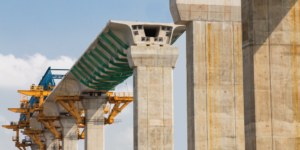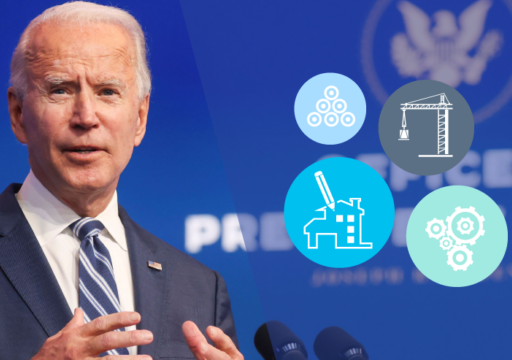
On July 28, 2021, the Senate voted to begin work on a nearly $1 trillion infrastructure plan meant to boost the American economy, tackle climate change, and create millions of jobs, fulfilling a major goal of the Biden administration in terms of economic growth and improvement.
Despite the plan shrinking from prior incarnations due to compromises, details of the framework show still-significant spending: The bill includes $550 billion in new spending for public works projects.
The plan’s new spending amount dropped from about $600 billion to $550 billion when compared to the prior version of the bill which had been agreed to in June 2021. According to senators involved with negotiations, money was eliminated for a public-private infrastructure bank, and was similarly reduced in other categories such as transit.
Even with these cuts, the package still includes $110 billion for highways, $65 billion for broadband, and $73 billion to modernize the nation’s electric grid, as per the White House’s fact sheet on the revised agreement.
Importantly, the plan also includes $7.5 billion for electric vehicle charging stations — a major focus for the administration, as President Biden worked with prior deals to emphasize making renewable energy easy to access for all citizens.

11 Ways President Biden Plans To Impact Construction
Additionally, the plan includes $25 billion in funding for airports, $55 billion for waterworks, and more than $50 billion intended to prop up infrastructure against cyberattacks and climate change.
Though the plan had seen a number of hurdles in the prior weeks, the senate’s sudden and quick movement was welcomed by the President, who had originally proposed $2.3 trillion in spending as part of the ambitious American Jobs Plan. After the administration’s March 31, 2021, announcement of the original plan, significant negotiation was done prior to an agreement between the Biden administration and Republican leaders.
The fact sheet from the White House claimed that the plan would focus on the creation of “good-paying, union jobs” while handling the world’s climate crisis and growing the economy: “With the President’s Build Back Better Agenda, these investments will add, on average, around 2 million jobs per year over the course of the decade, while accelerating America’s path to full employment and increasing labor force participation.”
In a statement, President Biden claimed that the plan “will put Americans to work in good-paying, union jobs repairing our roads and bridges,” “will build transmission lines and upgrade our power grid to be more resilient and cleaner,” and “will strengthen [the country’s] infrastructure, like our levees, in the face of extreme weather like superstorms, wildfires, droughts, hurricanes, and heat waves.”
Biden also emphasized the importance of the renewable energy part of the deal, saying that “American workers will make a historic investment to install the first-ever national network electric vehicle charging stations and undertake critical environmental clean-ups.”
Proponents of public transit will also be pleased with the plan, as it notes that “This bipartisan deal is the most important investment in public transit in American history and the most important investment in rail since the creation of Amtrak 50 years ago.”
Though concessions in broadband accessibility were made from the Biden administration’s original March 2021 proposal, the statement still claimed that “It will deliver high-speed internet to every American.”